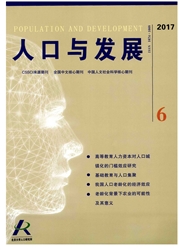

 中文摘要:
中文摘要:
家庭养老是现阶段我国农村养老保障的主体。在人口老龄化背景下,家庭养老功能逐渐弱化,农村养老保障向社会养老转变成为必然选择。立足于家庭养老发展变动趋势和农村社会养老保险动态调整机制,对中国农村养老保障方式转变的过程作了定量分析。城镇化及农村老年人口比重快速上升,是决定家庭子女养老向社会养老转变的重要推动因素,农村养老保障方式转变呈现为一个转折点、三个阶段。依据家庭子女养老和社会养老替代率水平变动趋势可确定:2012—2021年为家庭子女养老为主并呈逐渐弱化趋势;2022年左右为农村养老保障方式转折点,家庭子女养老与社会养老并重;2023—2050年社会养老为主并呈逐渐上升趋势。依据农村养老保障方式转变路径提出了相关对策建议。
 英文摘要:
英文摘要:
Traditional family supporting model is the main form in the rural old - age security system at the present stage. In the context of an aging population, the family supporting function gradually weakening, the rural social old -age pensions shift to become the inevitable choice. Based on the changing trend of development of the family supporting and dynamic adjustment of rural social pensions mechanism, the article makes the quantitative analysis on the changing path of the mode of China's rural old - age security and finds that urbanization and rapid in- crease in the proportion of elderly population in rural areas are the important driving factors of changing family supporting to social pensions, meanwhile finds a turning point and three pha- ses:according to substitution rate ,family support is priority and gradually weakening phase be- tween 2012 and 2021 ;2022 is the turning point of changing rural old -age security mode ,familysupporting and social pensions pay same role ity and will be gradually rising between 2023 termeasures and suggestions on the changing in rural old - age security ; social pensions is prior- and 2050. We put forward the corresponding coun- path of the rural old -age security.
 同期刊论文项目
同期刊论文项目
 同项目期刊论文
同项目期刊论文
 期刊信息
期刊信息
